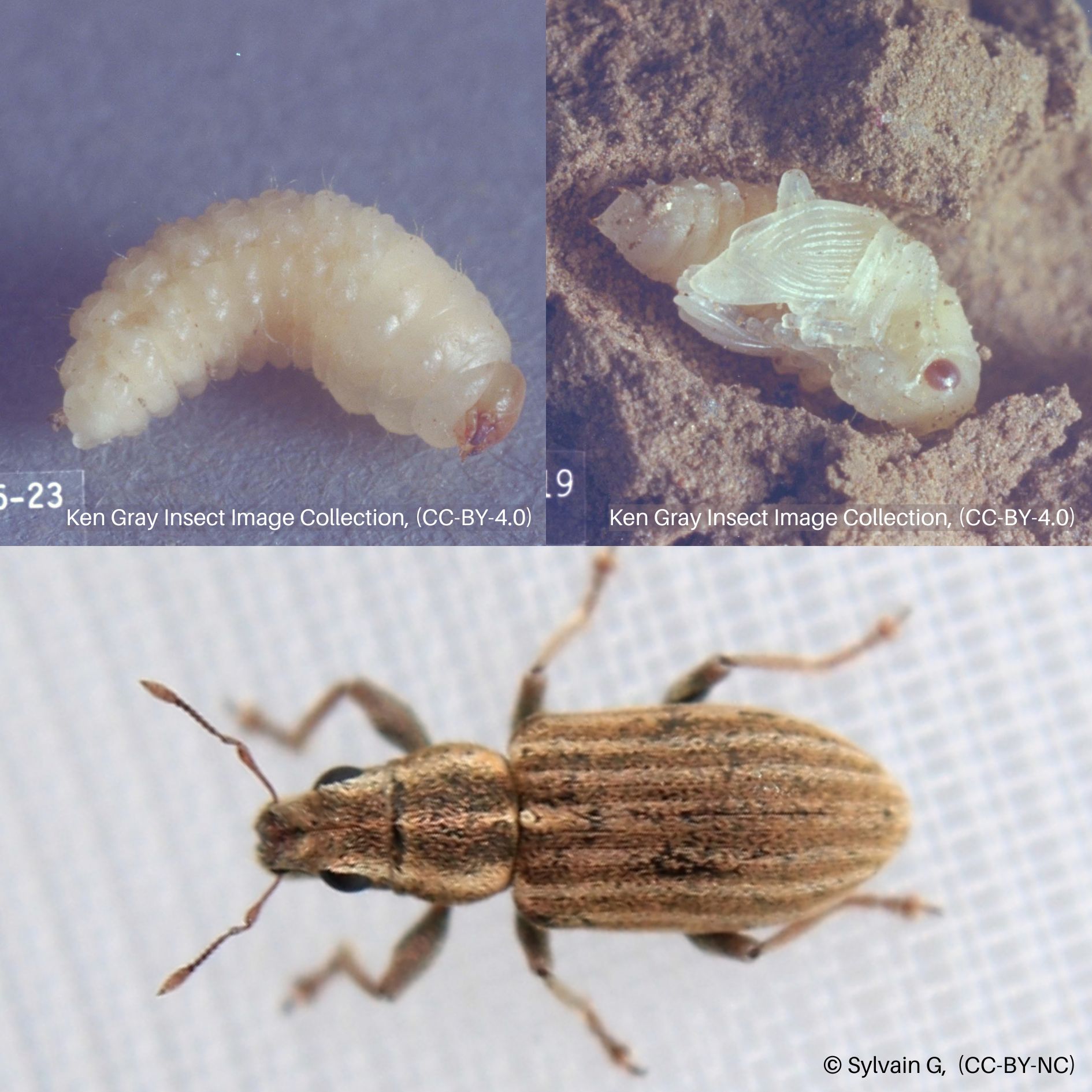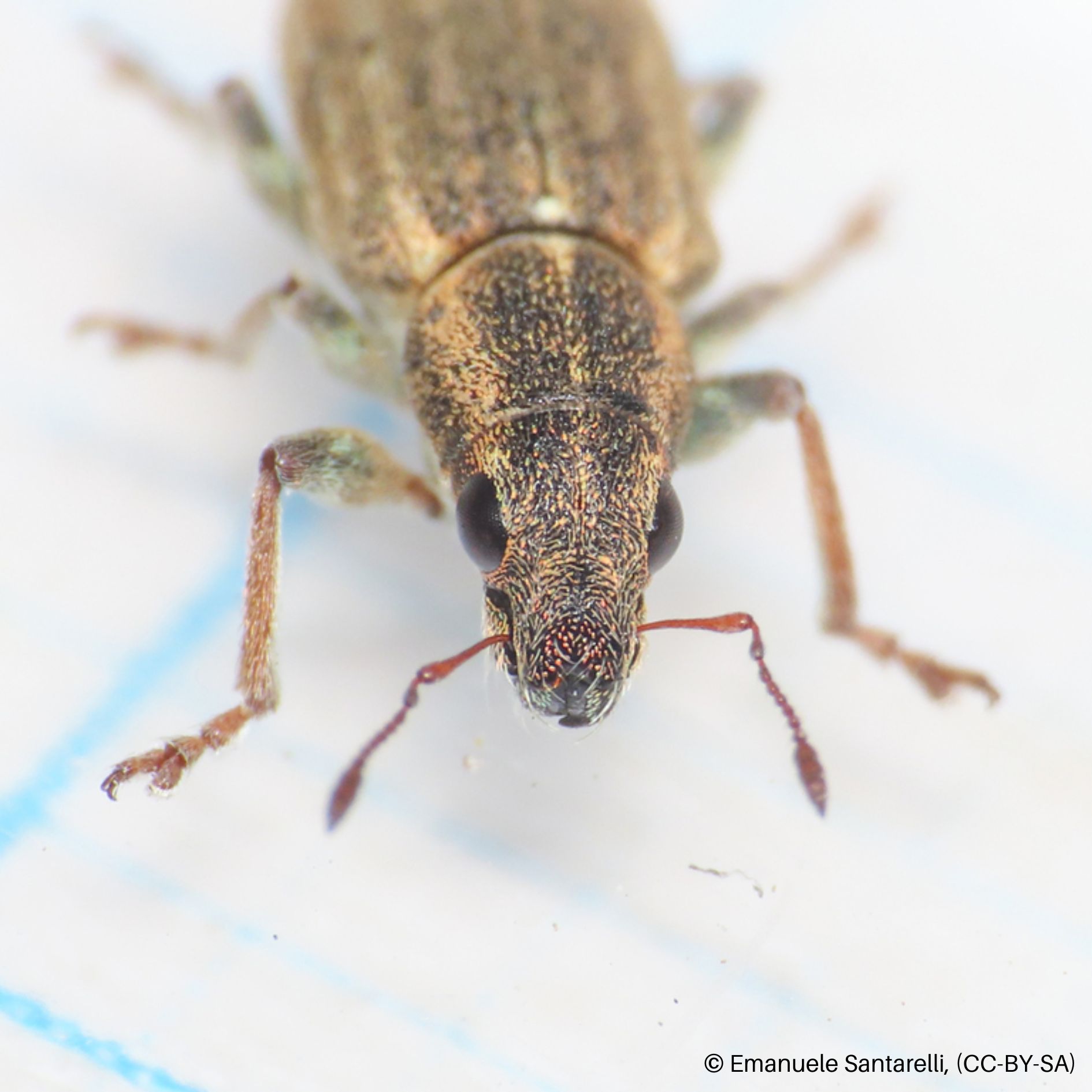Pea Leaf Weevil
 Pea Leaf Weevil Life Stages
Pea Leaf Weevil Life Stages Pea leaf beetle's snub nose.
Pea leaf beetle's snub nose. Root damage from larval feeding.
Root damage from larval feeding. Foliage damage from adult pea leaf weevil feeding.
Foliage damage from adult pea leaf weevil feeding.HOSTS
- Alfalfa
- Peas
- Beans
OVERVIEW
The pea leaf weevil (Sitona lineatus) has quickly expanded its range since being introduced to North America in the 1920s. Today, they can be found in fields around the US.
DESCRIPTION
Adults are about 1/5 inch (5 mm) long, with a snub nose. They are grey-brown with light stripes down their thorax and abdomen. Eggs are white, but turn black before hatching. Larvae are legless with cream bodies and dark head caps.
BIOLOGY
Egg | Larva | Pupa | Adult
Adult pea leaf weevils overwinter in plant debris and perennial legumes, such as alfalfa. When the weather warms, adults will move to legumes to feed and mate. Adults feed on leaves, creating scalloped leaf edges. Adult feeding damage is less damaging than that of larvae, but can kill young plants. After mating, females will lay eggs in the soil around the base of plants. Larvae feed on the root nodules of legume plants. These nodules contain beneficial nitrogen-fixing bacteria. When the nodules are destroyed, the plant’s ability to fix nitrogen is reduced, resulting in limited nitrogen uptake to the plant. Pupation occurs in the soil, and the weevils will emerge as adults in late summer to feed before overwintering.
SYMPTOMS
- Notched shapes in leaf edges.
- Reduced crop yield.
- Damaged root nodules
SCOUTING
- Begin monitoring for signs of pea leaf weevils as soon as legume crops emerge.
GENERAL MANAGEMENT
- Rotating legumes with non-susceptible crops can disrupt weevil populations.
- Plant trap crops, such as early spring-planted faba beans or winter peas, to deter pea leaf weevils from other crops.
- Plant legumes later in the spring to avoid the early peak emergence and dispersal of first generation adults.
INSECTICIDES
If populations reach an economically damaging threshold, consider foliar insecticide sprays. These should be applied before the adult females lay eggs.

